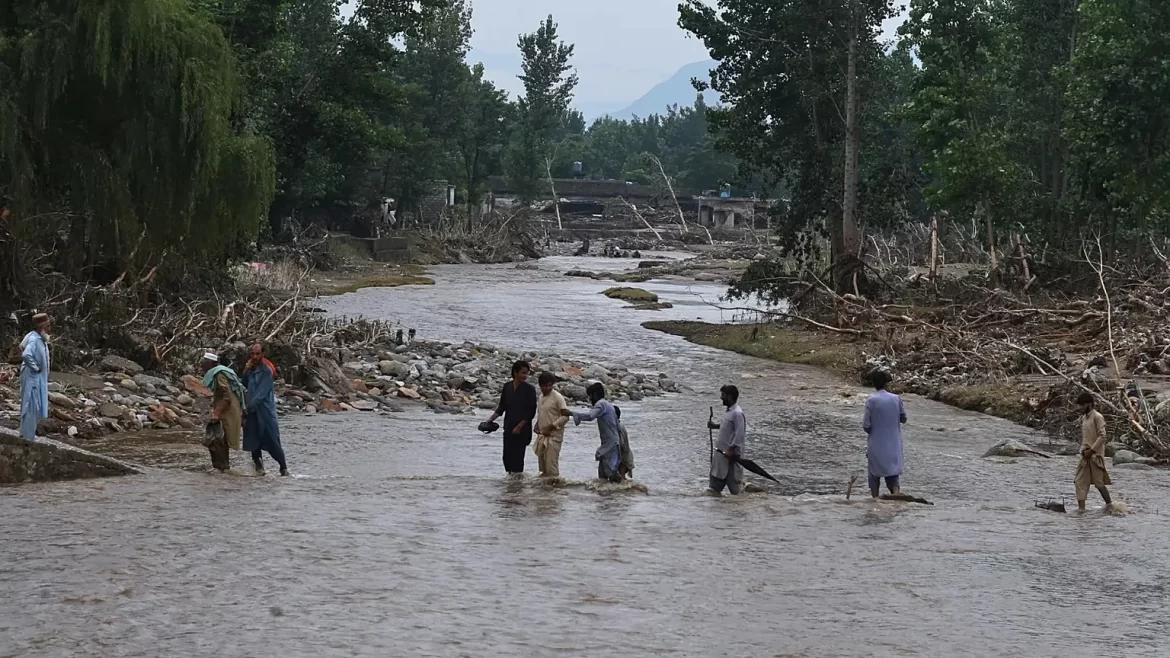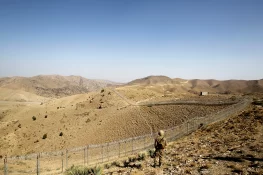What is a Cloudburst?
In recent years, Pakistan has witnessed increasingly erratic and severe weather. Among the most destructive events is the phenomenon known as a cloudburst, locally called “baadal phatna” (bursting clouds).
A cloudburst occurs when a massive volume of rain — more than 200 millimeters within an hour — falls over a small area. These events often take place in mountainous regions, accompanied by thunderstorms. The sudden deluge triggers flash floods, landslides, and large-scale destruction within minutes.
Meteorologists explain that the phenomenon results from warm air pressure between the earth’s surface and clouds. When the clouds can no longer hold their moisture, they release it violently. Rising humidity levels due to climate change are intensifying these downpours, making them more frequent and lethal.
Recent Cloudbursts in Pakistan
This year’s monsoon season has brought several devastating cloudbursts across Pakistan.
-
Chakwal (Punjab): A record 423 millimeters of rain fell within hours, crippling urban infrastructure. Roads, homes, and drainage systems collapsed under the pressure.
-
Hyderabad (Sindh): Streets turned into rivers, with nearly 70 percent of the city submerged. Residents were stranded as electricity and transport networks broke down.
-
Chilas (Gilgit-Baltistan): Following a violent downpour on the Babusar highway, flash floods swept away vehicles and claimed 19 lives.
These incidents highlight how different regions — from plains to high-altitude valleys — are now exposed to cloudburst threats.
Tragedy in Buner and Swabi
The most catastrophic event occurred recently in Buner district, Khyber Pakhtunkhwa. Within just one hour, rainfall exceeded 150 millimeters, unleashing flash floods and landslides.
According to official figures, at least 320 people were killed, including 207 in Buner alone. Entire villages vanished, leaving hundreds of families homeless. Relief efforts continue, but rugged terrain and ongoing rains have slowed rescue operations.
In nearby Swabi district, a cloudburst in Dalori Gadoon destroyed 12 houses and killed 15 residents. A detailed report on the deadly Swabi cloudburst highlights how dozens of lives were lost and entire communities were displaced. Local authorities declared an emergency, relocating survivors to safer areas. Officials have pledged to prevent resettlement in high-risk zones prone to future disasters.
Why Pakistan is Vulnerable
Pakistan lies in a region highly susceptible to extreme weather. Its mountainous north and poorly planned urban centers make communities especially vulnerable to cloudbursts.
Experts link the growing intensity of such events to climate change. Warmer air holds more moisture, increasing the likelihood of sudden, violent rainfall. The country’s fragile infrastructure, unchecked construction near riverbeds, and weak drainage systems compound the risks.
Pakistan contributes less than 1% of global carbon emissions, yet it ranks among the top ten most climate-vulnerable nations, according to the Global Climate Risk Index. The devastating 2022 floods, which displaced 33 million people, serve as a stark reminder of this vulnerability.
Coping With the Threat
Unlike cyclones or seasonal monsoon rains, cloudbursts are almost impossible to predict. However, experts recommend steps to minimize their damage:
-
Avoid construction near streams and flood channels.
-
Improve urban drainage and flood-control systems.
-
Promote reforestation to stabilize soil and reduce landslides.
-
Develop safe evacuation routes and early-warning mechanisms.
Disaster management agencies also emphasize community preparedness. Public awareness campaigns can help residents recognize early signs of risk and evacuate in time.
A Call for Urgent Action
The rising frequency of cloudbursts signals more than natural misfortune. It reflects human negligence, poor planning, and unsafe construction practices that turn heavy rains into humanitarian disasters.
Pakistan’s government, aid organizations, and local communities face a growing challenge: protecting lives and infrastructure in an era of accelerating climate change.
As the tragedies in Buner and Swabi show, cloudbursts can erase entire communities within hours. Without coordinated efforts, future monsoons may bring even greater losses.














